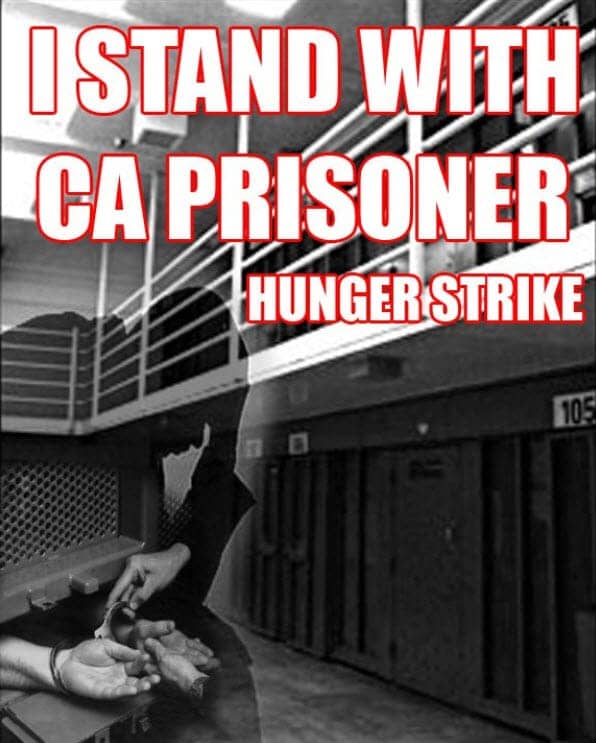By Ian Lovett, The New York Times, October 7, 2011
LOS ANGELES — When
inmates across California’s state prisons went on a hunger strike in July, prison officials
negotiated with them, ultimately reaching an agreement to bring the strike to
an end after three weeks.
But since inmates resumed the strike last week in continued protest
against conditions of prolonged isolation, things have gone differently: the
corrections department has cracked down, trying to isolate the strike leaders,
some of whom say they no longer trust the department and are hoping to push the
governor to enact reforms.
“I’m ready to take this all the way,” J. Angel Martinez, one of the
strike leaders at Pelican Bay State Prison, said in a message conveyed through
a lawyer this week. “We are sick and tired of living like this and willing to
die if that’s what it takes.”
This time, though, both sides have shown less inclination to
compromise, and no negotiations between the strike leaders and the Department of
Corrections and Rehabilitation have taken place since the strike
resumed.
An internal memo from George J. Giurbino, director of the Division of
Adult Institutions for the department, outlined new, more aggressive processes
for dealing with mass hunger strikes.
The new protocols seek to isolate inmates participating in the strike
from those in the general population and potentially subject them to
disciplinary measures, while prisoners identified as strike leaders could potentially
be denied contact with visitors and even lawyers.
In addition, two lawyers who had helped mediate talks were temporarily
barred from state prisons last week because “their presence in the
institution/facility presents a security threat.”
The animosity goes both ways, suggesting no easy resolution to a
situation in which inmates are protesting being kept in isolation in excess of
22 hours a day, part of an attempt to hamper gangs.
In late July, inmates ended their initial strike after officials agreed
to concessions for prisoners in security housing units, including allowing them
wall calendars, hobby items like drawing paper and a comprehensive review of
how inmates are placed in these isolation units.
The new hunger strike drew 4,000 people last week across the state.
But that number had drifted to fewer than 800 by Friday, according to
corrections officials, as the department has moved to isolate participants from
the general prison population.
Terry Thornton, a department spokeswoman, said that the promised
reforms were continuing as promised, and officials remained willing to
negotiate, but that leaders had not approached them with a new list of demands.
“Everything we said we were going to do, we did,” Ms. Thornton said.
“We are kind of puzzled about why this action was taken again. The review takes
time, but we are on track.”
Mistrust of the department is fervent among strike leaders, according
to Anne Weills, a lawyer who met with four of them at Pelican Bay. Prisoner
rights advocates have also accused the department of low-balling the number of
prisoners involved in the strike, arguing that as many as 12,000 inmates had
participated.
Ms. Thornton confirmed that 15 inmates at Pelican Bay had been moved
to an administrative housing unit because they were identified as coercing
other inmates into participation. She also said that all the strike leaders at
Pelican Bay were confirmed gang members, and that four of the 11 leaders had
ended their strikes.
But Ms. Weills said other prisoners told her that those four did so
because they could no longer endure conditions at the administrative housing
unit where they had been moved.
“We’re freezing,” Ronald Yandell, one of the strike leaders, said to
Ms. Weills this week. “The air-conditioner is blowing. It’s like arctic air
coming through, blowing at top speed. It’s torture. They’re trying to break
us.”
Oscar Hidalgo, a spokesman for the corrections department, said he did
not know why the four leaders had ended their strike.
Sharon Dolovich, a professor of prison law at the University of
California, Los Angeles, said the department’s response to the second strike
reflected court cases in the last 25 years that had given officials more
discretion to clamp down on inmate rights.
“Before, they didn’t want to seem inhumane, and now they’re in damage
control mode,” she said. “They’re demonstrating that they’re willing to use the
full scope of legal discretion to shut it down.”

No comments:
Post a Comment